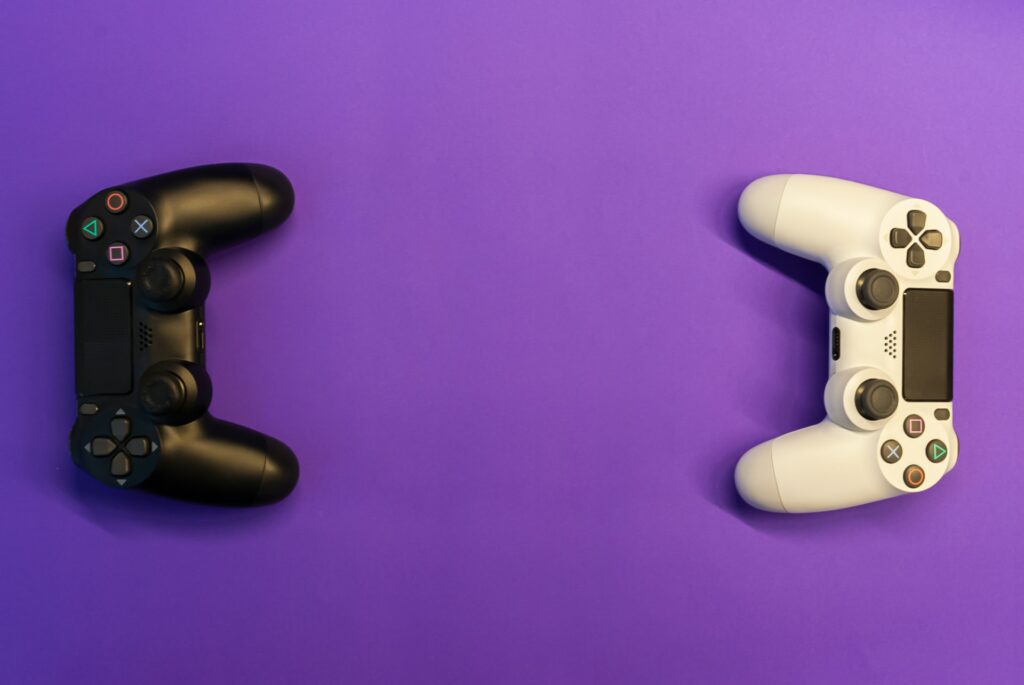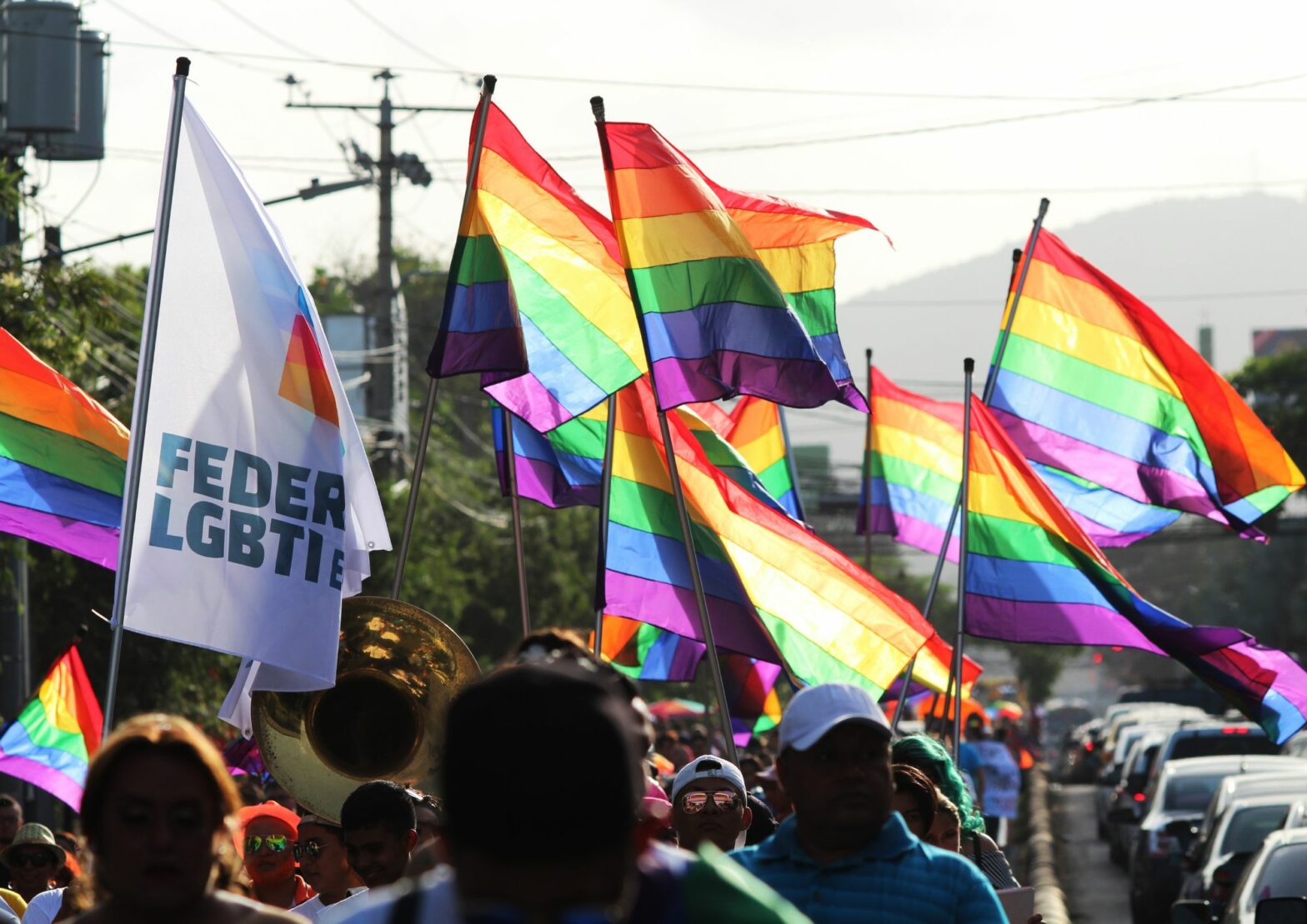Share Twitter Facebook Email Copy URL
This article outlines the state of the Philippine game industry through the eyes of its workers. Racism, oppression, and neo-imperialism continue to hinder Filipino talent, as does the lack of local government support. Filipino game workers are not as invisible as they used to be. However, they are still viewed as “less” due to their race and are often caught between two impossible choices: make Filipino games with close to no profit or make games for other countries and never be recognized.
Let’s start with a story.
I heard this one from my peers in games journalism. Gwendolyn Foster, a game designer known for her community building efforts, was barred from attending the 2018 Game Developers Conference, the most important annual event in the industry, in the United States. The reason? In the eyes of US Immigration – despite all the endorsements and accolades, proof that the conference was real, successfully ticking off every little box – she was still a lone female traveler who could become an illegal immigrant out to steal a white husband for herself.
They did not word it that way, but that’s what they are always thinking when they see a Philippine passport held by a brown, feminine face.
On the flipside, let’s look at my own experience from the tabletop game design side. In 2019, I attended Big Bad Con in San Francisco, where I was a fully sponsored attendee of a POC Meet & Greet between industry workers and aspiring game workers. I brought a suitcase full of games from Southeast Asia and spent three days pushing hard for #RPGSEA designers. At the end of it, I walked out of that con with friends, new opportunities, and the assurance that me and my own had been seen and heard by people within one of the centers of power for our industry. Once I had secured funding – a difficult feat, but not impossible – I did not experience any issue. Both me and Foster are full-blooded Filipino women. What did I do different?
Honestly? The accident of my birth. I’ve got a Canadian passport, thus letting me bypass pretty much every hurdle that could be thrown at me for not being white.
Let’s go back to Foster, whose story ends better than one might expect. She has not given up the fight, and was even featured in 2020 as one of GI’s 100 Game Changers. One of her statements in the article illuminates what it is like for game workers in our country: “Making games and shipping games in itself is already hard, but it’s so much harder for someone if you weren’t born in the ‘right’ country. You have to deal with government restrictions, inaccessibility to funding, lack of access to studios which have made a lot of people leave their countries for opportunities overseas even if they never wanted to in the first place.”
I wanted to juxtapose my experiences with Foster’s to drive three points home. First: the Philippine game worker space exists. Second: Filipino game workers can work at the same caliber as everyone else in the industry. Third: our existence and capabilities are constantly undercut by systematic racism and oppression. The problem instead is that we are in the wrong country.

How is the Philippines the “wrong country”?
In 2011, the Philippines was a small player in video games. We had a 0.02% market share in the then-$90-billion-dollar industry. Yet in 2016, Ubisoft, one of the largest game studios in the world, established a subsidiary in the country, and has been hiring our talent ever since. By the end of 2017, the Philippine government recognized video games development as a “high potential segment” of the Philippines’ Creative Services Industry, with revenue reaching $24.1 million. As of last year, we were home to about 43 million gamers who spent $572 million on games, making the Philippines the 25th biggest market. Yet our country has not had a large, internationally recognized video game title to its name since 2003’s Anito: Defend a Land Enraged.
Filipino gamers aren’t even recognized as players by many game studios either. Square Enix’s marketplace does not include the Philippines in their player registration forms. This means that almost every Pinoy you meet in Final Fantasy XIV had to lie about their place of residence and citizenry. Another example: the Playstation Network has no direct way to buy PSN currency for the Filipino market, because the Philippines does not exist as a region. We also note that Nintendo Online isn’t available in the country either, adding many Nintendo games to an already exhaustive list of region-locked content that Pinoy gamers don’t have access to. International tournaments like the EVO Championship Series have banned Filipino participants because of their internet connectivity issues.
To answer this question, I spoke with multiple workers in the video game industry. What stood out the most for workers from the eSports and publishing front were the barriers that existed for players. Internet speeds in our country, despite our high level of dependence on it, continue to make international news. The high prices and terrible service means that most Filipinos can barely use social media effectively, so you can only imagine what it must be like trying to download and play games that often require downloading dozens of gigabytes of data. If that isn’t enough, our average monthly salary is P15,200/$726 – among the lowest in a recent study of over 100 countries. Given the ever-increasing cost of phones, consoles, computers, and games themselves, it should be no surprise that video games are a niche hobby on top of being a mostly gray market.
Where console and PC-based games flounder, mobile games flourish due to the proliferation of highly accessible data plans and pay-on-installment phones – and this has, of course, caught the attention of international studios. Mobile Legends is the biggest game in the Philippines now, with Valorant being a close second. Prior to mobile games revolution, competitive games like Starcraft, Counterstrike and Defense of the Ancients were big across the demographics for a simple reason: net cafes allowed anyone with a hundred pesos to their name to log in for a match.
Of course, big sponsors follow the money, and to them, the money is not in investing in local talent and local ideas. “We’ve been cultivating the talent for generations,” one worker complained. “But that talent inevitably gets eaten up by foreign companies for their own games because of a lack of support.” He is the PR and Communications Manager of a game publishing company. A resounding sentiment was that the only way to stay afloat was to ride on the trends, then use whatever free time one had left for passion projects.
Merely surviving despite the odds is success in itself.
On the game development front, however, there is a different idea of “success”. Ria Liu, Executive Director of the Game Developers Association of the Philippines (GDAP), remarked that punitive government laws are a persistent headache for game studios. Government support exists for small companies and multinational companies, but medium companies – where most studios would land – must keep their numbers small, or miraculously grow into a multi-national to remain compliant in the eyes of the Philippine government.
Staying small to survive comes with its own issues. GDAP can barely promote our studios to international clients for outsourcing needs because their margins are better suited to larger teams. Furthermore, Philippine studios are not at liberty to just exist and make the games they want; they must have niche skills to offer, or risk being passed over in favor of our Southeast Asian neighbors. A significant issue that our workers now face, despite game design existing as a course in our schools since the early 2000s, is not matching international standards. Companies only end up hiring 5-8% of our graduates, citing a lack of technical knowledge and expertise as their main issue. The 2016 K-12 shift in our educational sector was also ill-executed, resulting in mass lay-offs, hasty course reorganization, and a poor transmission of knowledge across several batches. Now, COVID-19 is challenging any gains we had in this direction, as restrictions are now barring the access that game dev students need to computer labs: places where they could put their skills to the test.
If that was not already enough of an issue, workers in marketing have noted that the Philippines has an image problem. Most of the work on a game, for example, would be done in the country, but clients preferred not to acknowledge that reality. “Colleagues of mine who would be pushing our products were told not to play up ‘The Filipino Thing’,” she said. She also noted, with some chagrin, that the business card of her company listed all branches on its front side except for Manila, which would only be visible on the back of the card: a dirty secret. To date, this interviewee of mine ended up leaving the company entirely. “We have people with the skills, and we have people with a lot of talent, but we’re not using them in a way that really makes them stand out.”
Where do we go from here?
Where does that leave our aspiring workers? It is hard to say. Crowdfunding platforms like Kickstarter do not have any support for the Global South: the few successes folks have seen with respect to indie games made by Filipinos are often the result of having a patron based in a country with Kickstarter support, a whole lot of self-promotion, and even more luck. Other companies have decided to take the controversial route of developing games with NFTs, because the financial gains of “play to earn” models have ironically allowed them to develop games on their own terms. James Chua of Popsicle Games noted how easy it now is to hire talent, expand their studio, and make an authentic, recognizably Filipino game. “There’s no need to hide, no need to be ashamed.” 50-60% of the player base for Axl Infinity, he noted, are Pinoys, and investors are aware of this. Popsicle Games’ up and coming project, Anito Legends, will have a strong focus on Filipino myths, and Filipino stories – all things that run against the grain of our persistent image problem.
And, of course, there is the ever-present risk of staying in a country whose democracy is failing. Ryan Sumo, head of Squeaky Wheel Studio, recalled seeing Rodrigo Duterte get voted in, and thinking, “What am I building this for?” He is now a game developer at Paradox Interactive and has fully migrated to Sweden. He claims that his reasons for leaving were manifold, personal, and complex. Furthermore, given the effort it took to even leave in the first place, it is hard to say if he will be back. “They call me a pioneer, but being a pioneer means not knowing what the fuck you’re doing. Still, what we did already opened some doors, some eyes.”
Nevertheless, Sumo and others, regardless of their location, continue to push for game developers in the Philippines. Squeaky Wheel, together with Ranida Games and Yangyang Mobile, are spearheading Project PIGI, an initiative that hopes to mentor fresh talent. He notes that the community is still growing despite everything. “Everybody used to know everybody. Now the feeling when I meet other people is ‘I don’t know you’, and that’s great.”

There are no easy answers.
There’s a long road ahead of Filipino game workers. Whether you’re out to make your bread and butter on freelance commissions, or join a local studio, or establish a studio of your own, or migrate abroad and join a large video game company, the barriers to entry are high, and the problems are each complex with multiple tension points. Our labor is consistently devalued as cheap, with international patrons believing that they’re doing us a favor simply because exchange rates mean earning anything in dollars is already good. Since our labor is viewed as cheap, our products and their stories are viewed similarly as uninteresting and unmarketable.
Yet, with how huge the potential player base continues to be, it’s impossible to say that the Philippines isn’t a viable market, much less a viable pool of talent that could be capable of producing cutting edge games all on their own with the right push. Furthermore, the interest in developing games remains high: even in this era of pandemic, applicants to game design courses continue to come in, and multiple support and networking communities thrive in digital spaces. Local game workers continue to keep the lights on in their studios, and more international game studios are looking towards our country for their future subsidiaries.
Let’s return to my personal experience on the tabletop roleplaying games front. In the last three years, I have managed to make a name for myself within this industry because I received mentoring and financial support. Furthermore, organizations and individuals who were influential in the space actively listened to me and my concerns. They were also proactive in asking for recommendations on who else they could hire, and what good Southeast Asian games they could publish. If more people in video games did this for Filipino game workers, imagine what how much it could benefit our space.
Notably, you don’t even have to be involved in video games to help. Keeping an eye out for our local studios and supporting their products is plenty. Actively interrogating the game industry’s biases against the Philippines helps as well. So would supporting government candidates whose platforms tackle issues that our game workers could face. Any financial support that you could pour into scholarships and mentoring programs could uplift a game worker who sorely wishes to keep making games.
International studios also need to stop coming to our country simply to use our talent for their games: they can and must participate actively in the act of building our community and endorse local stories as much as they endorse local talent. Seeing Filipino names in the credits of a AAA video game is not enough. Filipino stories should not be published as games because they can sell: they should be published as games because they are stories worth telling, just like any other story.
Gayatri Chakravorty Spivak, postcolonial theorist, defined the subaltern as a voiceless entity, dispossessed of agency, and constantly spoken for by those in power. As Filipinos, we are subalterns as both consumers and game designers, rarely ever given an opportunity to speak for ourselves. To be an independent player in the industry would mean being given the liberty to define our own successes, and not have to worry that any risk we take – or failure we suffer – will wash us out completely. To stand on our own would mean that we could make games as we please, and tell the stories we want rather than be beholden to international interests. It would also mean that we would stop being an invisible market, perceived only when it looks like there’s an opportunity for just a few investors to be had. We, too, should not be barred by racism, bigotry, and neo-imperialism. We should be allowed to join the world stage.
Pam Punzalan is a queer game worker and community organizer in Manila. She has freelanced for large tabletop roleplaying game publishing houses such as Rowan, Rook & Decard, Evil Hat, Paizo, and Paradox Interactive on top of pursuing her own work.



